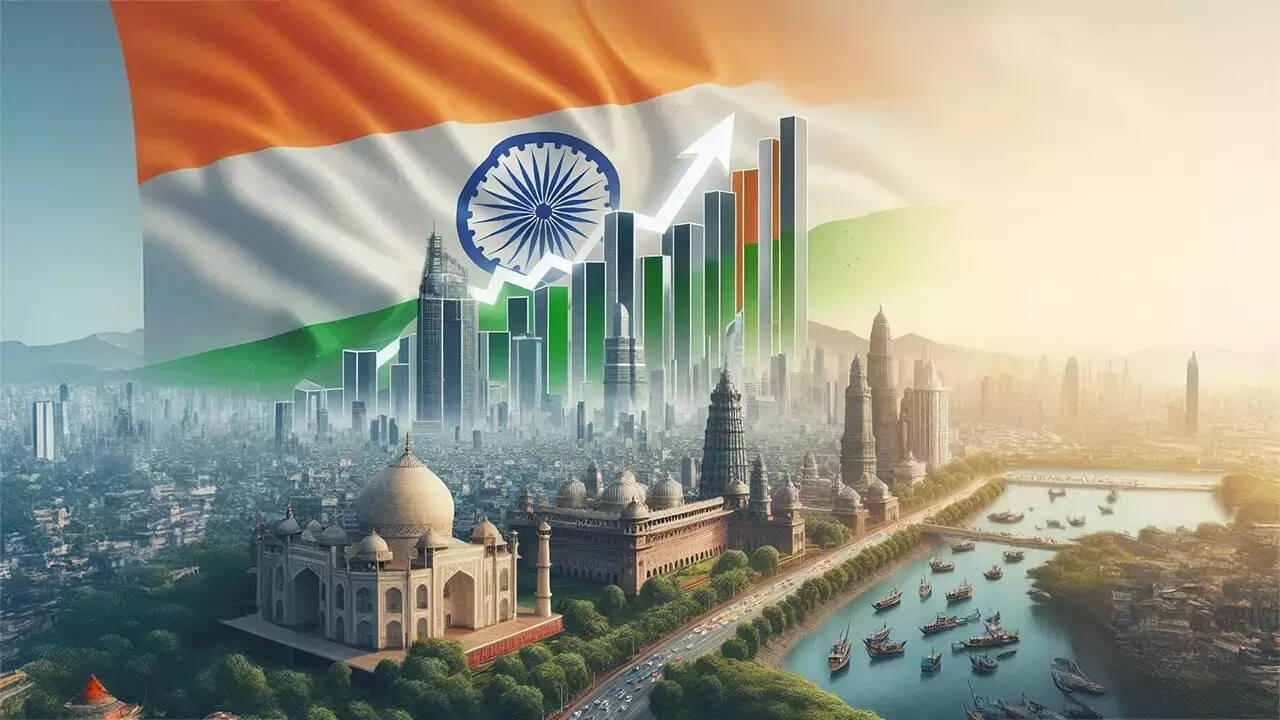India’s GDP has grown at a robust 8.2% in the second quarter. Why has the real GDP growth been more than expected and what’s the outlook for the coming quarters? Why are economists pointing to the narrowing gap between nominal and real GDP growth? We explore:
India’s Economy Sprints Ahead: Decoding the GDP Growth Numbers
The headlines are buzzing: India’s GDP surged by a remarkable 8.2% in the fiscal year 2024, marking the fastest pace in six quarters. It’s a number that demands attention, but beyond the headline figure, what’s really happening within the Indian economy? Is this sustainable growth, or a temporary blip? Let’s dive in and unpack the data.
On the surface, 8.2% GDP growth is undeniably impressive. It paints a picture of an economy firing on multiple cylinders. The construction sector, for example, experienced robust expansion, fueled by government infrastructure projects and a resurgent housing market. Manufacturing also showed encouraging signs, suggesting a rebound in industrial activity. Even the agricultural sector, despite facing challenges from uneven monsoons, managed to contribute positively to the overall growth story.

However, a closer look reveals a more nuanced picture. While the headline number is strong, it’s crucial to understand the base effect at play. The previous year’s growth was comparatively lower due to lingering effects of the pandemic and global economic headwinds. This lower base inevitably inflates the percentage increase in the current year. Furthermore, private consumption, a critical driver of any economy, hasn’t quite kept pace with the overall GDP growth. This suggests that while the economy is expanding, the benefits may not be trickling down to all sections of society as quickly as one might hope. Are individuals seeing that same 8.2% in their paychecks and spending habits? Probably not.
Dissecting the Drivers of Economic Expansion
One of the significant contributors to this impressive growth has been government spending. Massive infrastructure projects, from highways to railways, have not only boosted the construction sector but have also created employment opportunities. The government’s push for local manufacturing through initiatives like “Make in India” appears to be yielding some positive results as well.
But relying solely on government spending isn’t a sustainable long-term strategy. The key to unlocking India’s full economic potential lies in fostering greater private investment. While there have been encouraging signs of increased investment in certain sectors, a broader and more sustained increase is needed to maintain this growth momentum. The government is actively working to create a more favorable investment climate by streamlining regulations and improving infrastructure, but more needs to be done.
Global Headwinds and the Path Ahead
Despite the strong domestic performance, the Indian economy isn’t entirely immune to global headwinds. The ongoing geopolitical tensions, rising interest rates in developed economies, and the risk of a global recession all pose potential challenges. A slowdown in global demand could impact India’s exports, which have been a significant contributor to growth in recent years.
Navigating these challenges will require a multi-pronged approach. Firstly, focusing on structural reforms to improve the ease of doing business is crucial. This includes simplifying tax laws, reducing bureaucratic hurdles, and investing in education and skill development. Secondly, boosting domestic demand by promoting private consumption and investment is essential for long-term sustainable growth.
Furthermore, sustainable development practices, with a focus on green energy initiatives, are integral to long-term stability. You can read about some of India’s impressive developments in solar energy and other areas [here](internal-link-to-related-article-about-green-energy).
Understanding India’s Impressive GDP Growth
The 8.2% GDP growth is undoubtedly a positive sign for the Indian economy. It reflects the resilience and potential of the country. However, it’s important to look beyond the headline numbers and understand the underlying drivers and challenges. While government spending and certain sectors like construction have played a significant role, sustained growth requires a broader base of private investment and consumption. Addressing global headwinds and continuing with structural reforms will be crucial for ensuring that this growth momentum continues in the years to come. The task now lies in transforming this impressive sprint into a marathon of sustained and inclusive economic prosperity.






